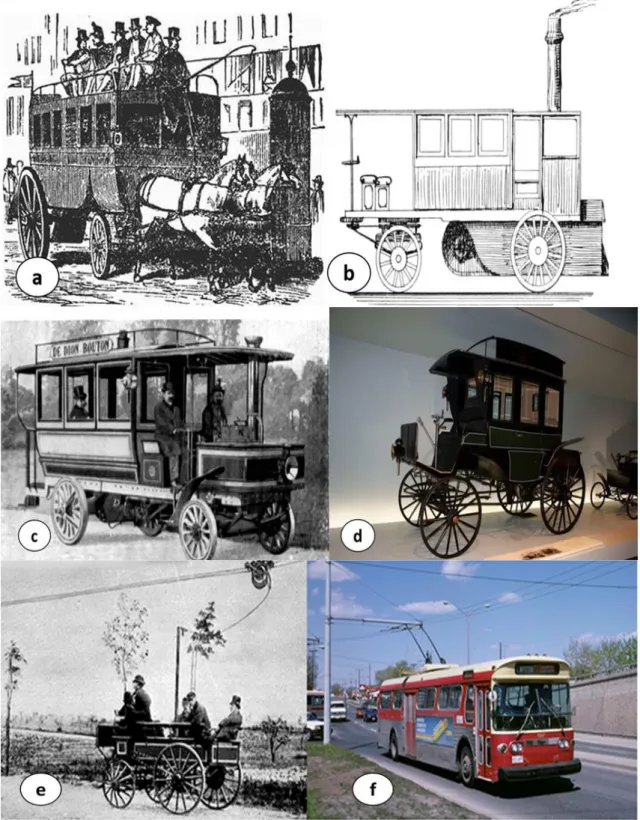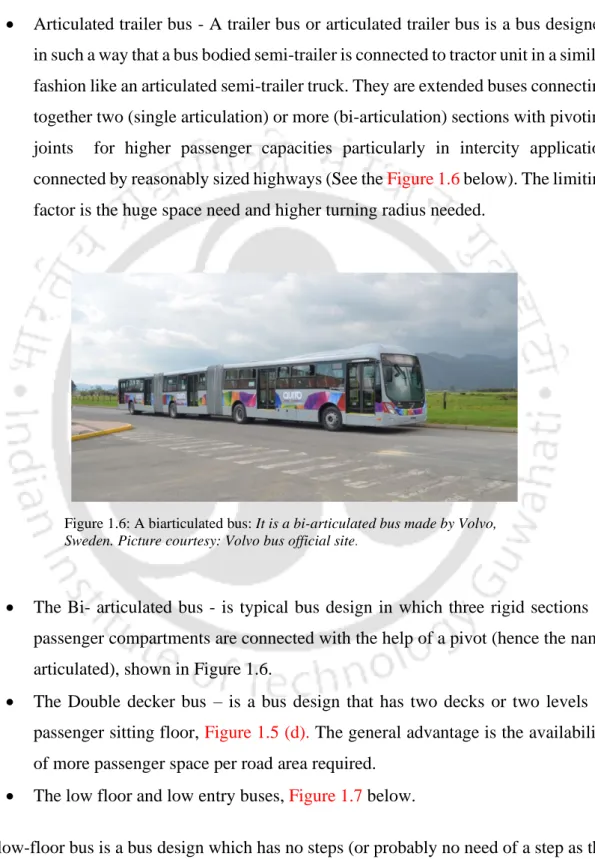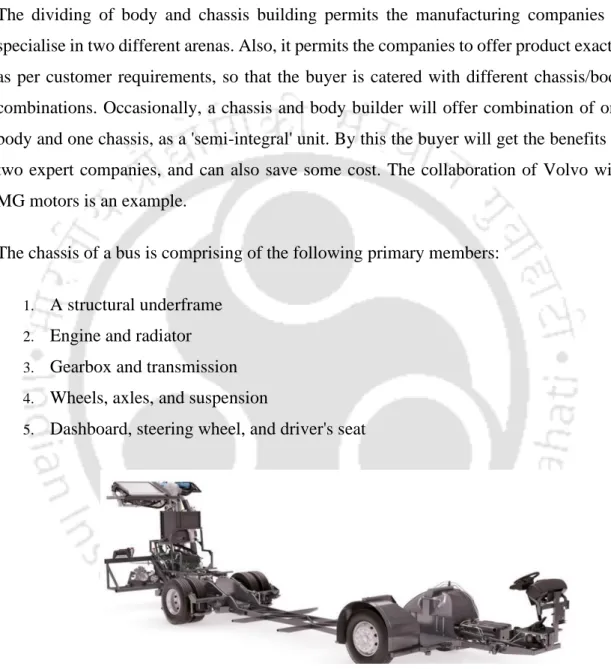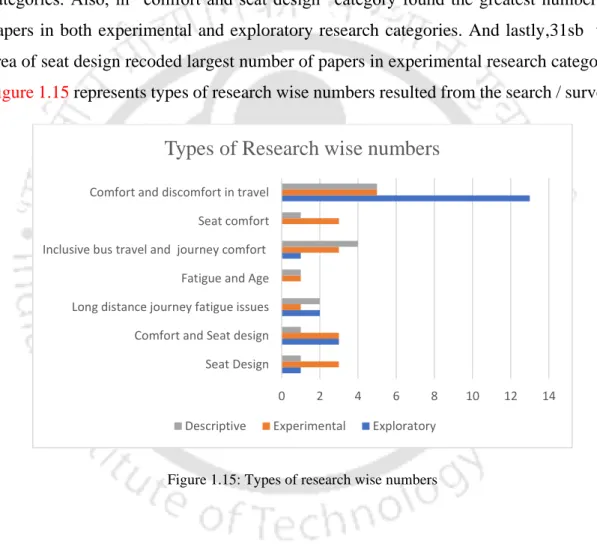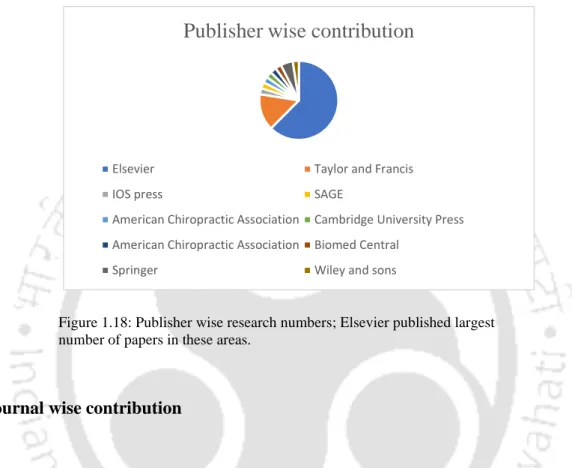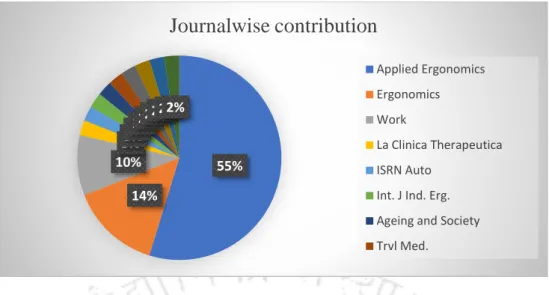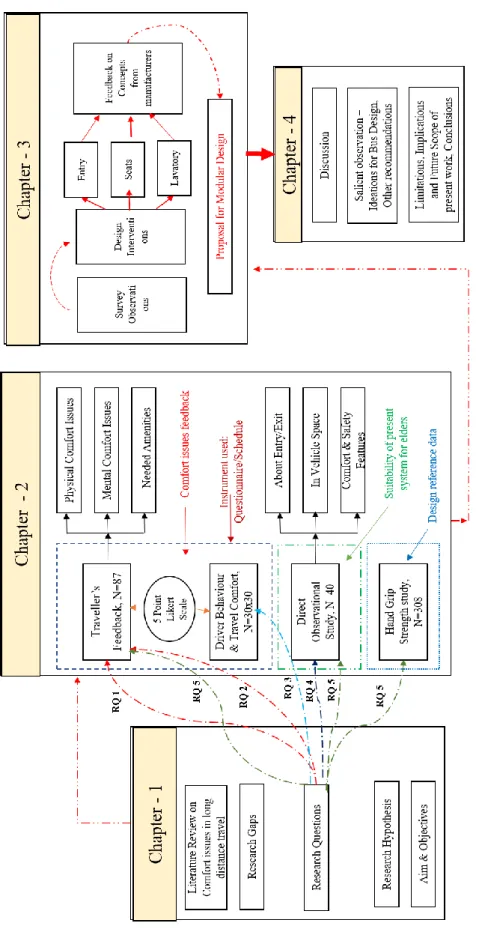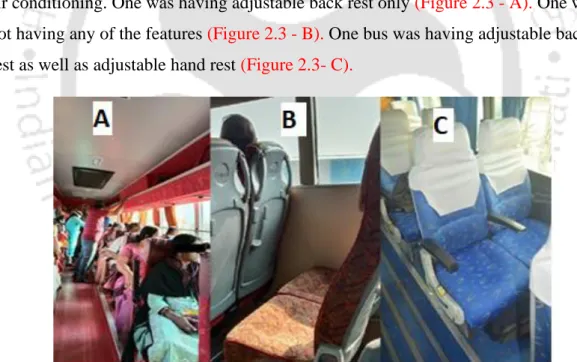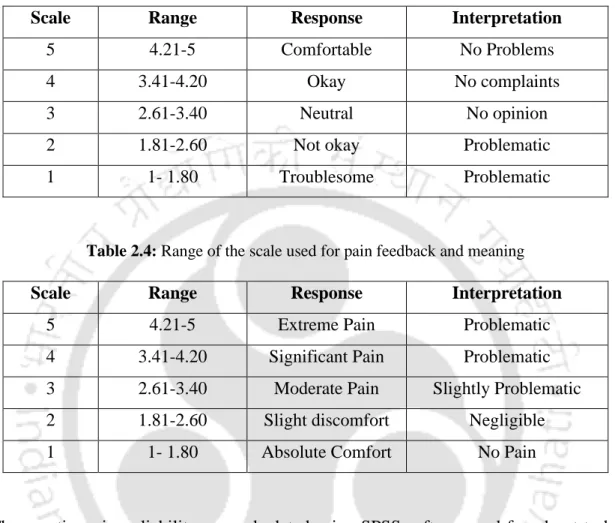It is an attempt to shed light on the still hidden areas connected to one of the most important parts of the transport system - the "Bus". In India, pilgrimage seems to be one of the most important reasons for guided tours. This work is an attempt to qualitatively assess the needs and requirements of elderly pilgrims in terms of their comfort, since the aspect of comfort is subjective, of a very complex nature.
CONTENTS
1 Introduction - Road based mass transportation system
2 Experiences and Perceptions of Travellers and Service Providers
3 Design Interventions and Feedback on Concepts
4 Discussions, Salient Features and Conclusion
2-3 Range of the scale used for seat feedback and meaning 57 2-4 Range of the scale used for pain feedback and meaning 57. In the first part, a brief introduction to mass road transport using buses, its origins , history , and classifications are included.
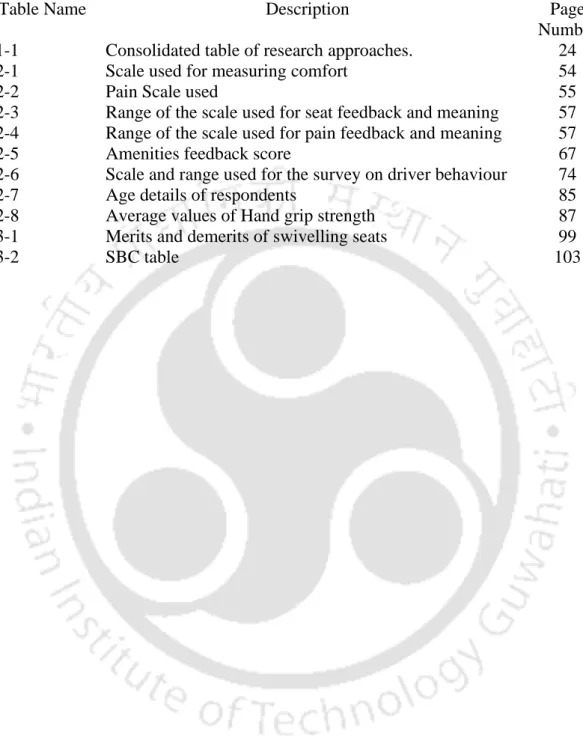
Chapter - I
Introduction: Road Based Public Transport System Using Buses
Overview of the research area
A low-floor bus is a bus design which has no steps (or perhaps no need for a step as the floor height is kept as low as possible) between the ground and the floor of the bus. One of the limitations of the low floor or low entry configuration is that, due to the low ground clearance available. Chassis selection – The right company among the OE manufacturers is selected according to the customer's need.
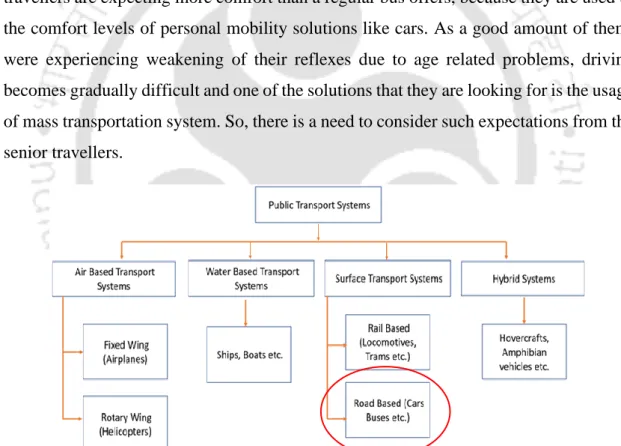
Need of the study
There are many limitations when trying to evaluate the inclusive design philosophy of such public transport systems. The existing systems had to be evaluated for suitability for the elderly, and we need a deeper understanding. This point is also reinforced by the fact that especially for the elderly, the concept of comfort and fatigue is pronounced.
Status Background
- Review Methodology
- Keyword Selection
- Selection of Database
- Collection of Articles
- Inclusion and Exclusion Criteria (Filtering)
- Analysis of Articles
- Key Findings
- Future Perspective of Research
- Synthesis of Articles
A3 Denis Alves Coelho et al 2012 Experimental Seat Design A4 Megan Romelfanger, et al 2019 Descriptive Seat Design A5 Joshua P. B1 Sukru Karali et al 2017 Descriptive Comfort and Seat Design B2 M Kolich et al 2007 Exploratory Design Peter al 2017 Experimental Comfort and Seat design B4 R. E7 Sukru Karali et al 2017 Descriptive comfort issues E8 Vincenzo Cascioli et al 2016 Experimental comfort issues E9 Joyce M.A.
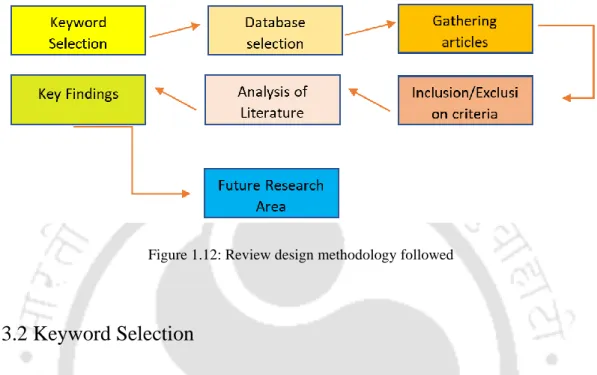
Authorwise contribution
- Discussion
- Critical Appraisal
- Research Gaps
- Research questions
- Research Hypothesis
- Aim and Objectives of the study
- The study framework
- Conclusion
- Thesis layout: Chapter Scheme
The public transport system can be divided into different subsystems based on the means of transport; if,. Therefore, passenger requirements should be defined according to the different phases of the given mode of transport. To identify the influence and preferred color for the interior of the buses traveling long distances, especially with the elderly.
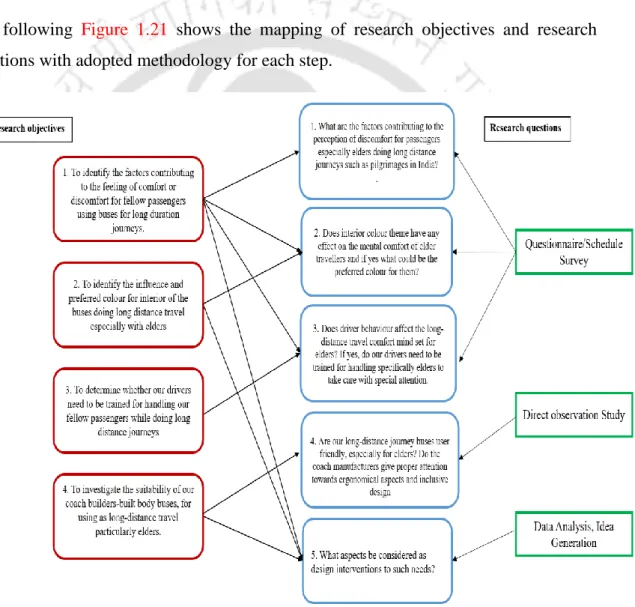
Experiences and Perceptions of Travellers and Service Providers
Chapter 2
- Introduction
- Surveys
- Study – I Bus User Feedback
- Study – II Driver Behaviour and Travel Comfort
- Study III Bus System Feedback (Observational Study)
- Concerned with Entry Exit system 1. Puddle lamp
- Concerned with in vehicle movement 1. Floor unevenness
- Concerned with in vehicle feature for easiness/Safety/Comfort of passengers
- Concerned with Entry Exit system
- Concerned with in vehicle movement
- Study IV. A Study on Hand Grip Strength of Adults
- Discussion
All major car manufacturers have appropriate research wings for the cognitive comfort of users. The study reveals that almost 94% of people chose bright colors for the interior, such as ivory. A bumpy ride (also called flatulence or bumpy ride - the most influential cause of motion sickness).
For the first question, which was "was the acceleration and deceleration smooth and comfortable and without jerks?", the score was 2.16, representing "disagree". Similarly, for the second question "Was the driver informative and cooperative?", the score was 2.36, which also falls under the "disagree" category. For the question "Do you feel the driver was helpful", the average score was 2.46, representing "disagree".
Now for the question "Are you satisfied with the overall behavior of the driver?" the average score was 2.37 which is again "Disagree". Now if we consider the age of the driver and the points they got, there are some interesting pointers. Also, it is very interesting to see the relationship between the age of the driver and the result.
Entrance lighting – The entrance lighting on the steps makes it easier to get in and out in low or no light (night). Interior color theme of long-haul buses has a major impact on passenger's perceived comfort. Drivers with mature and cordial behavior have been found to increase passengers' perceived comfort.
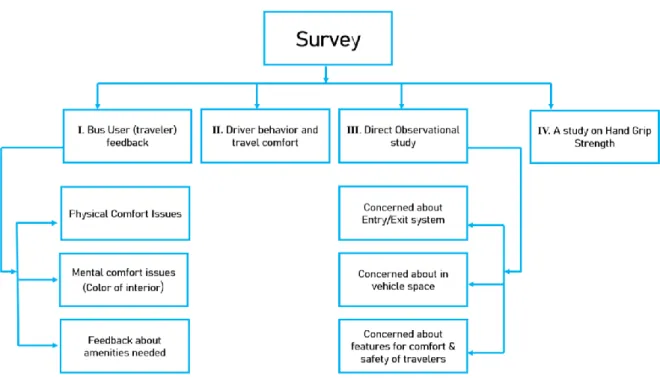
Design Interventions and Feedback on Concepts
Introduction
Section I - Feedback of the studies
- Feedback about travel comfort and interior features
- Feedback about facilities and amenities needed
- Bus system Feedback
- Driver Behaviour and Travel Comfort
- B. Interior features and amenities
- Step size for entry and exit
Driver behavior and comfort - This investigated whether long distance bus driver behavior affects passenger comfort perception and whether our drivers should be trained to handle long distance travelers such as pilgrims or the elderly in general. The overall responses of the subjects indicate that some attention should be paid when designing seats for long-distance buses. Also, most respondents were in favor of lighter shades (shades of blue, white or ivory).
When asked about video players or monitors, almost 85% voted for video monitors, but they preferred the individual headrest mounted monitors over the regular TV that most of the tour operators choose. When inspecting whether the treads are homogeneous or not, the majority of the buses did not have homogeneous treads. None of the buses had an emergency bell switch, which is an absolute necessity in the case of separate cabin buses used for air conditioning.
It was very interesting to note that as the age of the driver increases, the satisfaction levels of the passengers also increase. Since the needs of co-passengers are different, the driver who handles them for multi-day travel must be trained and made aware of the needs and requirements of the co-passengers. Addition of swivel seats: Since the travelers under consideration mainly use their bus for pilgrimages (which are also leisurely in nature), sightseeing is an inevitable part of the journey.
It increases the perceived luxury of the cabin and increases the perception of more bang for the buck.
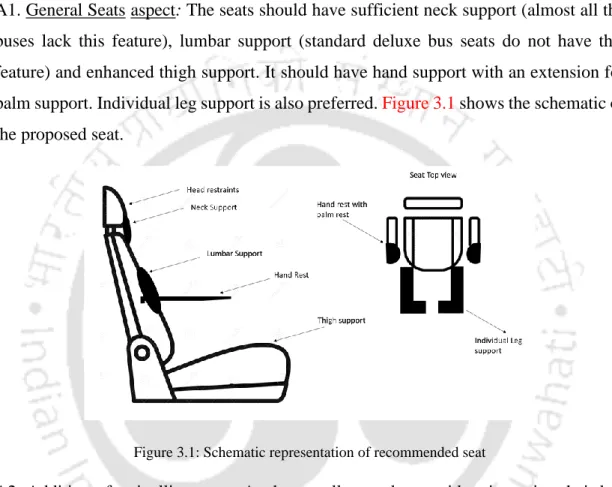
Section – 3 Feedback on concepts generated
Example includes the recently started "JET" bus service in the USA connecting Washington DC and New York by road, Figure 3.7.
Proposal for modular design for the buses
Cost is not a major concern at all and people pay the premium. Seats can be arranged in high density (low comfort) style to low density (high comfort) mode, and in between there are many options. Even for an extremely high number of seats for use on such short trips, the toilets can also be removed and seats can be added instead.
So simply one bus can be operated for different roles and different comfort levels as required by the passengers. Fully flexible – The same bus can be used for many roles such as short trips, long expensive trips, guided tours etc. Can be used in different seating capacities as required by the passengers – The bus can be used with any configuration such as ultra-low density seats, low density seats, high density seats and ultra high density seats.
Can be offered with various comfort levels – The comfort offered in ultra-low density and low-density seats is much more than other modes. Slight increase in perceived cost – Since the model is not being made, manufacturers indicate a slight increase in the manufacturing cost. Extensive design is required – as a new concept, extensive design is required which may also add some cost.
Setup time is longer – Since internal resources need to be arranged and rearranged, the time required is a bit longer in the beginning, but not on all journeys.
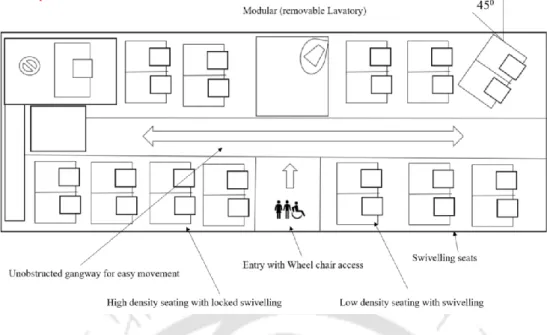
Conclusion
Discussions, Salient Features and Conclusion
Discussions, Salient features and Conclusion
Discussion
After a dedicated and extensive study that also included many field investigations, the following recommendations have been formed. One applies to the bus designers or coachbuilders (because in India coachbuilders are primarily responsible for bus construction as discussed earlier in this report), the second applies to the legislators as it deals with the training of drivers.
Salient observations
- Ideation issues for bus design
1A6: At the entrance to the cabin there must be at least 90 cm free width without any obstruction such as seats. 1B4: Aisles should be of sufficient size and design to allow free movement of the passenger during travel, as this reduces the chances of the effects of prolonged sitting. 1C1: The seat must be designed with proper support for neck, upper back, lumbar and legs.
1C4: Each seat must be designed with a water bottle, medicine pouch, eyeglass storage pouch, front trays and shoe storage. 1C5: The seats must be equipped with seat belts, because on long journeys passengers tend to doze or sometimes even sleep for a long time. 1C7: All seats must have separate stowage areas under the seats for the storage of personal belongings for immediate use.
1E1: Since it was clear that the interior color theme affects the perception of travel comfort among passengers, light colors should be used as much as possible for bus interiors. 1E2: Bus ceiling should be fitted with light colors to give a feeling of space and tranquility. 2A3: Drivers must be trained to lend a helping hand as and when needed for the passengers.
2A5: Only drivers who are properly trained and qualified should be tasked with driving long-distance buses.
Observations fulfilling Objectives
To identify the factors contributing to the feeling of discomfort or fatigue for fellow passengers using buses for long duration journeys
To investigate the suitability of our coach builders-built body buses, for using as long-distance travel particularly elders
- Thesis Novelty, Significance and Contributions
- Contribution to knowledge database
- Contribution to bus design
- Contribution to the society
- Limitations of the study
- Scope for Further studies
- Conclusion
Determine the influence of the color theme used in the interior of the bus and the perceived comfort of long-haul travelers. This work suggested that color has an impact on passengers' perceived comfort, especially if they are on a long-distance journey of several days. The elderly seemed to prefer light colors for the interior of the vehicle they are traveling in.
This study attempted to investigate the same and came up with some of the design ideas, which we believe would enhance the travel quality and perceived comfort of elderly travelers. Also, the space in the vehicle was not enough for free movement, which is a necessity to reduce some of the fatigue symptoms of long distance travel. In addition, we found that driver behavior plays an important role in passengers' perceived comfort during long-duration travel.
Cecilia Rios Velasco.,(2010) “Color and Visual Comfort” The University of Texas at Austin: School of Architecture; Center for Sustainable Development. Comfortable rear seat positions preferred by car passengers.” In: Proceedings of the 5th International Conference on Applied Human Factors and Ergonomics AHFE 2014. The study addresses physical ergonomic issues such as traveler's physical fatigue and comfort issues, as well as mental comfort issues related to interior color themes used in the buses effects on the mental or perceived comfort of the passengers.
In addition, the influence of the driver's behavior on the perceived comfort of the passengers is also taken into account.
